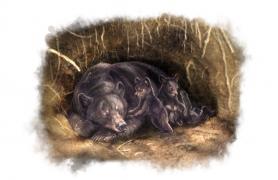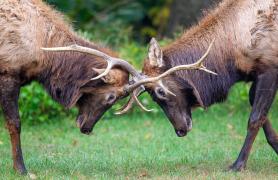Book scorpions are rice-sized predators that eat dust mites, ants, and tiny moths. They’re often found in musty old books, where they prowl across the pages looking for book lice, another favorite snack.
Nature’s mood ring: The color of a male wild turkey’s head offers clues to the bird’s mood. A relaxed gobbler sports a bluish-red head. When a gobbler gets excited, angry, or scared, its head flushes with blood and turns bright red.
Why do honey locusts have so many huge thorns? Some scientists suspect the thorns kept mastodons — elephant-like creatures that once lumbered across North America — from pushing over locusts so they could eat the sweet seeds.
Badgers are so good at digging, they often sleep in a new burrow from one day to the next. But when raising babies, a mama badger may remain in a single den for days and dig separate bedroom and bathroom chambers.
Touching poison ivy can give you an itchy rash. But animals don’t have this problem. Deer nibble the plant’s leaves in the spring, and birds eat its white berries during winter.
Not all snow geese are as white as snow. Some have a dark body. Until 1983, biologists believed the darker geese, called “blue geese,” were a separate species.
Many trees are both male and female. But eastern red cedars usually have separate sexes. Male trees have tiny brownish-orange cones that release clouds of yellow pollen. Female trees produce small, bluish-purple berries.
Also In This Issue

In winter, some animals power down to stay around.

Missouri’s mightiest mammal makes a comeback
And More...
This Issue's Staff
Alexis (AJ) Joyce
Angie Daly Morfeld
Noppadol Paothong
Marci Porter
Laura Scheuler
Matt Seek
David Stonner
Stephanie Thurber
Cliff White






















